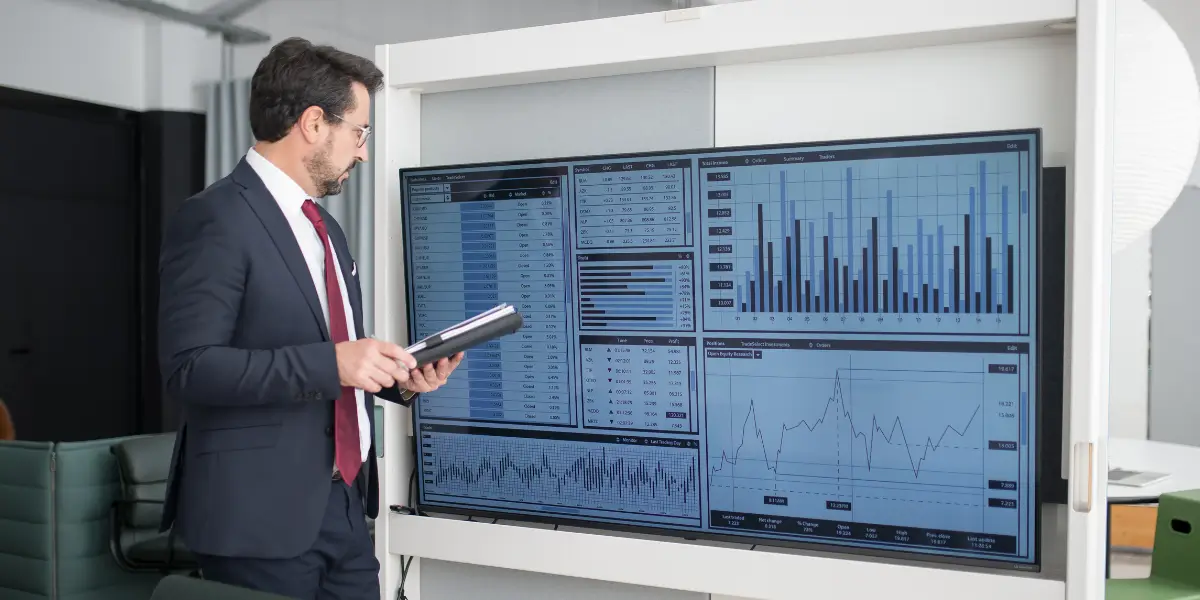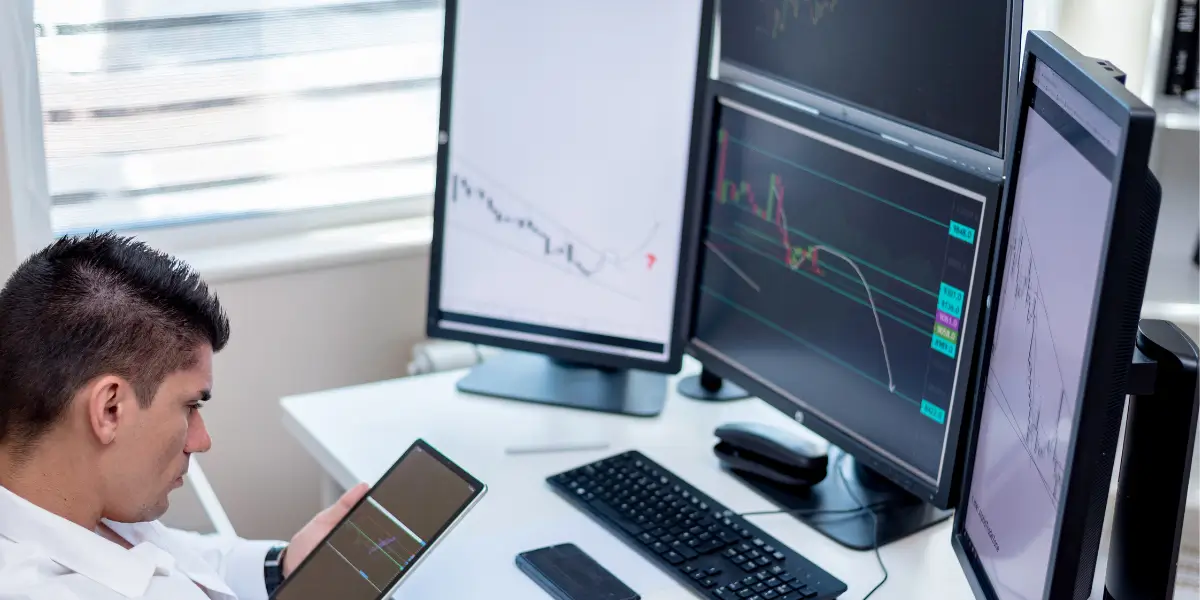At Phidias PropFirm, we’ve witnessed countless traders transform their trading careers by successfully passing prop firm evaluations and securing funded accounts. But here’s the reality: statistics show that fewer than 15% of traders successfully complete the challenge. This comprehensive guide will show you exactly how to pass prop firm challenges using the proven methodology.
Getting funded through prop firms isn’t just about knowing how to trade—it’s about understanding the specific rules, mastering risk management, and developing the right psychological approach. Whether you’re attempting to pass prop firm eval for the first time or looking to improve your success rate, this guide covers everything you need to know about passing prop firm evaluation at Phidias PropFirm.
TL;DR: How to Pass Prop Firm Challenge – Essential Success Tips
Master These 7 Critical Elements to Successfully Pass Your Prop Firm Challenge:
1. Choose the Right Account Type
- Fundamental Accounts: Best for intraday traders, 3-day minimum, positions must close before 10 PM UTC
- Swing Accounts: Allow overnight positions, ideal for session transitions and longer-term setups
- Static Accounts (25K): Simplest rules with fixed $500 drawdown, fastest path to funding
2. Understand EOD Drawdown System
- Drawdown calculates daily at 10 PM UTC, giving you flexibility during trading hours
- Never risk more than 40% of daily drawdown on a single position
- Trailing drawdown adjusts upward with daily profits – protect your gains
3. Follow Proper Risk Management
- Risk maximum 1-2% per trade – this is non-negotiable
- Break profit targets into daily goals: aim for $400-$500 daily on 50K accounts
- Use bracket orders with predetermined stops and targets
4. Avoid the #1 Killer Mistakes
- Don’t rush the challenge – quality over speed always wins
- Never oversize positions – 5-10% risk per trade leads to account elimination
- Treat evaluation seriously – build good habits from day one
5. Master the 30% Consistency Rule
- No single trading day can exceed 30% of your total profits
- Spread gains across multiple days for sustainable results
- Focus on consistent daily performance, not home run trades
6. Optimize Your Trading Sessions
- Trade during London-New York overlap (1-5 PM UTC) for maximum liquidity
- Focus on ES, NQ, RTY for reliable conditions during evaluation
- Use 2-3 core indicators maximum to avoid analysis paralysis
7. Plan Your Challenge Progression
- Days 1-3: Conservative approach, risk less than 2% per trade
- Mid-challenge: Scale out profits at 30% of target, manage drawdown carefully
- Final phase: Reduce position sizes when within 10% of profit goal
Bottom Line: Success comes from disciplined risk management, consistent execution, and treating your evaluation like a real business operation. Most traders fail from overtrading and poor risk control – avoid these traps and you’re already ahead of 85% of participants.
Understanding the Futures Prop Trading Challenge Structure
Mastering Different Account Types for Successful Prop Firm Challenge
Passing prop firm challenges requires understanding the diverse Prop Firm account structures. Each account type presents unique opportunities for getting funded in prop firm environments:
Fundamental Accounts are designed for intraday traders who want to pass prop firm evaluation quickly. With our unique EOD trailing drawdown system, you calculate risk at market close, giving you maximum flexibility during trading hours. These accounts don’t allow overnight positions, but they offer the fastest path to passing prop firm eval with our 3-day minimum trading requirement.
Swing Accounts provide extraordinary overnight and weekend trading freedom, making them ideal for traders who want to pass prop firm challenge while holding positions across multiple sessions. Our trailing EOD system works exceptionally well with these accounts, allowing profits to automatically adjust your daily risk limits while maintaining positions overnight.
Static Accounts (25K) offer fixed $500 drawdown – no calculations, no trailing, just straightforward trading. These accounts provide the fastest route to getting funded, with immediate LIVE access upon reaching the $1,500 profit target. For traders who want to pass prop firm evaluation without complex rules, static accounts deliver simplicity.
The 10K Drawdown Account represents our most competitive challenge. Through monthly competitions, traders compete for our unique static loss account with 8 E-mini contracts. This account type attracts serious traders who understand advanced risk management and want to prove their skills in a competitive environment.
Real also: How Do Prop Firms Work? Ultimate Guide to Get Started
Key Challenge Rules You Must Master to Get Funded
Successfully passing prop firm challenge at Phidias requires mastering our specific rule set. Our EOD (End of Day) system calculates drawdown at 10 PM UTC daily, meaning you can trade with maximum flexibility during market hours without worrying about intraday drawdown calculations.
Profit targets vary by account size: our 50K accounts require $4,000 profit, while 100K accounts need $4,500 for evaluation accounts. The key to passing prop firm evaluation lies in breaking these targets into daily goals. We recommend targeting 8-10% daily progress toward the overall goal, which translates to approximately $400-$500 daily for a 50K account.
Trading hours restrictions apply only to Fundamental accounts: you must close all positions before 10 PM UTC. However, our Swing accounts allow overnight and weekend positions, giving you significant advantage in session transitions. This flexibility is crucial for getting funded in prop firm challenges where session overlaps provide optimal trading conditions.
Position sizing limits depend on account size: 50K accounts allow up to 10 mini contracts, while 100K accounts permit up to 20 mini contracts. Understanding these limits prevents common mistakes that can derail your progress toward passing prop firm eval. We’ve seen traders fail by misunderstanding contract specifications, so always confirm whether you’re trading E-minis or micro contracts.
Developing a Futures-Specific Trading Strategy to Pass Prop Firm Evaluation
Instrument Selection and Market Sessions for Passing Prop Firm Challenge
Getting funded requires instrument expertise. At Phidias, traders find greatest success with index futures during peak liquidity hours. The ES (E-mini S&P 500), NQ (E-mini NASDAQ), and RTY (E-mini Russell 2000) provide optimal conditions for passing prop firm challenge due to tight spreads and deep liquidity.
Session timing dramatically impacts success rates for passing prop firm evaluation. Our most successful traders concentrate on the London-New York overlap (1 PM – 5 PM UTC) for index futures, where volume and volatility create ideal conditions. For energy futures like CL (crude oil), the American session provides best opportunities, particularly during inventory reports and OPEC announcements.
Currency futures offer unique advantages for getting funded through prop firms. The 6E (Euro), 6J (Japanese Yen), and 6B (British Pound) show predictable patterns during Asian and European sessions. Traders who master these instruments often find passing prop firm eval more manageable due to lower overnight risk compared to commodities.
Metals trading requires session awareness: GC (Gold) and SI (Silver) perform best during London morning hours, while HG (Copper) shows strong activity during Asian industrial hours. Our funded traders emphasize metal futures for consistent profit generation, especially when coordinating positions across multiple accounts.
Agricultural futures present seasonal opportunities: ZW (Wheat), ZS (Soybeans), and LE (Live Cattle) offer predictable patterns during harvest seasons. Traders seeking to pass prop firm challenge through agricultural futures should focus on USDA report dates and weather-related volatility.
Strategy Development Process for Prop Firm Evaluation Success
Backtesting forms the foundation for passing prop firm challenge. At Phidias, we require minimum 6-month backtesting with realistic spread costs and slippage assumptions. Traders who skip this step rarely succeed in passing prop firm evaluation, as paper profits rarely translate to live trading.
Forward testing validates strategy effectiveness: we recommend minimum 30 days of demo trading before attempting prop firm challenges. This process should simulate actual account conditions, including position sizing based on actual challenge rules and trading within specified hours.
Strategy adaptation for our 30% consistency rule requires balancing profit distribution. Traders must ensure no single day generates more than 30% of total profits. This rule encourages sustainable trading practices essential for long-term success after getting funded.
Multi-timeframe analysis enhances strategy robustness. Our top performers combine 5-minute entry triggers with 15-minute trend confirmation and 1-hour structural levels. This approach reduces false signals and improves risk-reward ratios crucial for passing prop firm eval.
Advanced Risk Management Techniques for Passing Prop Firm Eval
Managing EOD Drawdown to Successfully Pass Prop Firm Challenge
Understanding EOD mechanics separates successful traders from those who fail passing prop firm evaluation. At Phidias, drawdown calculates at 10 PM UTC, meaning you have trading flexibility throughout the day. However, if your balance hits the drawdown limit anytime during the day, immediate liquidation occurs.
Trailing drawdown strategy requires daily profit lock-in. When you end the day profitable, your drawdown adjusts upward automatically. For example, a 50K account starting with $47,500 liquidation level that gains $500 will have a new liquidation level of $48,000 the next day. This compounding protection is crucial for passing prop firm challenge.
Position concentration management prevents catastrophic losses. We recommend never risking more than 40% of daily drawdown on a single position. For a 50K account with $2,500 EOD limit, this translates to maximum $1,000 risk per trade. Traders who ignore this guideline often fail by taking oversized positions.
Correlation awareness is essential for getting funded successfully. Trading multiple index futures simultaneously increases overall account risk. Our top traders diversify across uncorrelated instruments: combining ES with energy futures or metals with agriculture to manage portfolio risk effectively.
Daily Loss Limit Strategies for Prop Firm Challenge Success
Trading day definition at Phidias runs 11 PM to 10 PM UTC. This 24-hour cycle allows for continuous position management across Asian, European, and American sessions. Understanding this timing is critical for passing prop firm evaluation, especially for swing traders.
Recovery protocols after hitting daily limits require disciplined approach. At Phidias, we enforce absolute daily loss limits – no exceptions. Traders must wait until the next trading day begins at 11 PM UTC. Attempting to bypass these limits results in account disqualification, making this rule non-negotiable for getting funded.
Session-based risk allocation improves success rates. Our analytics show traders allocate risk effectively by dedicating 40% to London session, 40% to New York session, and 20% to Asian session. This distribution aligns with volatility patterns and prevents overexposure during low-liquidity periods.
Emergency exit procedures must be automated and clear. Successful traders use bracket orders with predetermined stop losses and profit targets. When approaching daily loss limits, they reduce position sizes or switch to paper trading to maintain evaluation progress.
Trading Psychology for Evaluation Success: Getting Funded at Prop Firms
Mindset for Challenge Performance and Passing Prop Firm Evaluation
Performance pressure intensifies during prop firm evaluations. At Phidias, traders report peak stress levels during days 7-10 when profit targets become more urgent. Our successful candidates develop pressure management techniques: they view each trading day as independent and focus on process rather than results.
Consistency requirements demand daily profit distribution awareness. Our 30% rule requires traders to spread profits across multiple days. This encourages sustainable trading habits rather than seeking single large gains. Traders who master this mindset show higher success rates in passing prop firm challenge.
Recovery strategies after drawdown periods test psychological resilience. We recommend reducing position sizes by 50% after reaching 60% of daily loss allowance. This preservation approach allows traders to maintain participation while avoiding account elimination.
Progress tracking systems provide objective feedback. Our traders use custom dashboards displaying daily profit, cumulative gains, and consistency metrics. This data-driven approach removes emotion from trading decisions and clarifies path to success.
Emotional Discipline Systems for Prop Firm Challenge
Trading routine development creates psychological stability. Our top performers follow strict schedules: pre-market analysis (9-10 AM UTC), active trading (1-5 PM UTC), and post-session review (6-7 PM UTC). This structure reduces impulsive decisions and maintains professional standards.
Session management techniques prevent burnout. We recommend 50-minute trading blocks with 10-minute breaks to maintain concentration. Traders who ignore fatigue signals often make costly mistakes during critical evaluation periods.
Loss acceptance protocols transform negative emotions. Our psychological training emphasizes: view losses as business expenses, analyze mistakes without self-judgment, and maintain forward-looking perspective. This mindset shift accelerates learning and improves trading consistency.
Profits management prevents overconfidence. After significant winning days, successful traders review risk management protocols and potentially reduce position sizes. This conservative approach protects gains and prevents giving back profits through overtrading.
Platform Optimization and Technical Setup for Passing Prop Firm Eval
Trading Platform Configuration for Prop Firm Challenge Success
Rithmic platform mastery is essential for getting funded at Phidias. Our traders optimize order entry speed by customizing hotkeys and setting up one-click trading. This efficiency advantage can mean better fills and reduced slippage during volatile market conditions.
Market depth configuration varies by instrument needs. For ES and NQ trading, we recommend Level II data from CME exchange. However, for energy futures, NYMEX depth becomes critical. Our analysis shows traders using proper depth data achieve 5-7% better execution prices on average.
Chart configuration optimizes analysis: successful traders use multiple timeframe layouts with 5-minute, 15-minute, and 1-hour charts synchronized. This visual hierarchy helps identify trend direction while timing precise entries for optimal risk-reward ratios.
Order management systems prevent errors. At Phidias, we recommend bracket orders with fixed stops and OCO (One Cancels Other) targets. This automation reduces emotional interference and ensures consistent risk management across all trades.
Technical Analysis Tools for Getting Funded
Indicator selection impacts trading efficiency. Our most successful traders limit themselves to 2-3 core indicators: for example volume profile for identifying key price levels, RSI for momentum confirmation, and moving averages for trend direction. This focused approach prevents analysis paralysis common during evaluation pressure.
Learning how to use Order flow tools can provide a significant trading edge. Using Rithmic’s order flow data, successful traders analyze buy/sell imbalances at key levels. This insight helps predict reversals and breakouts essential for getting funded. Our training emphasizes reading order flow during high-volume sessions without expensive tools.
Volume analysis enhances strategy precision. By studying volume spikes at resistance/support levels, traders confirm price action validity. This simple yet effective strategy helps filter false breakouts, improving win rate crucial for passing prop firm challenge.
Market sentiment indicators and volatility indicators like VIX (for S&P instruments), are highly valuable to complement technical analysis. These free tools help traders gauge market expectations, allowing position size adjustments aligned with market conditions.
Challenge Progression Strategy: Your Path to Passing Prop Firm Challenge
Early Challenge Trading for Prop Firm Evaluation Success
Days 1-3 methodology establishes foundation. At Phidias, our statistics show traders who risk less than 2% per trade during initial days have 40% higher completion rates. This conservative approach allows for market adaptation and strategy validation.
Risk capital allocation follows progressive scaling: Day 1 uses 25% of allowed risk, Day 2 increases to 50%, and Day 3 reaches 75% capacity. This gradual exposure helps identify optimal trading times and instrument characteristics.
Strategy validation requires live market confirmation. Even with extensive backtesting, traders should verify strategy assumptions in real market conditions. Our top performers often adjust parameters after initial live experience.
Mid-Challenge Operations for Passing Prop Firm Eval
Profit lock-in techniques preserve gains. When reaching 30% of total target, successful traders scale out portions of profitable positions. This partial profit taking allows for continued upside while securing partial success.
Position management evolution adapts to account growth. As cumulative profits increase, traders can gradually increase position sizes. This dynamic scaling optimizes profit potential without exceeding risk limits.
Drawdown navigation requires systematic responses. Upon reaching 40% of maximum drawdown, you might reduce your position size. This defensive posture prevents account elimination while maintaining evaluation participation.
Final Challenge Phase: Securing Your Prop Firm Funding
This is the point where we see a lot of traders fail. When within 10% of profit goal, successful traders tend to reduce position sizes and tighten stop losses. This risk reduction ensures goal completion without endangering accumulated gains.
Instead trying to finish as soon as possible, traders focus on highest-conviction setups. This concentration improves management efficiency and reduces complexity.
Account transition preparation begins 3 days before target. Traders should familiarize themselves with Funded Account rules and payout procedures. Understanding 10-day trading requirement for payouts helps plan future trading activities.
Professional mindset shift occurs gradually. As evaluation nears completion, traders should adopt business perspective: treating trading as income generation rather than goal achievement. This mental transition prepares for sustained funded trading.
Payout Strategy and Funded Account Transition: Getting Paid After Passing Prop Firm Challenge
Understanding Payout Requirements for Prop Firm Challenge
10 trading day requirement accumulates between payouts. At Phidias, this means 10 separate days with executed trades, not 10 consecutive days. Our automated system tracks this precisely, ensuring fair calculation for all traders.
Minimum payout thresholds vary by account: 50K accounts require $52,600 balance for $2,000 withdrawal eligibility, while 100K accounts need $103,700 for $2,500 withdrawal. These thresholds protect account viability while allowing regular income generation.
Monthly payout window (20th-25th) requires advance planning. Traders should execute required trades with sufficient buffer time. Late requests carry over to next payment cycle, potentially delaying income.
Balance requirements post-withdrawal ensure continued trading capability: balances cannot drop below initial capital plus $100. For example, 50K accounts must maintain $50,100 after withdrawals. This safeguard mechanism prevents over-extraction and account failing.
Funded Account Management After Passing Prop Firm Evaluation
LIVE account transition occurs after 3 payouts from single account or $75,000 cumulative payouts. This milestone achievement unlocks daily payout capability with no maximum limits, representing ultimate trader freedom.
Daily payout advantage transforms trading economics. Unlike challenge restrictions, LIVE funded accounts allow anytime withdrawals above minimum balance. This flexibility enables cash flow management aligned with personal financial planning.
Account scaling strategies maximize funded capital. Our system allows 5 Fundamental + 5 Swing accounts, plus 5 Static and 1 10K Drawdown accounts. This diversification opportunity enables portfolio approach to funded trading.
Professional progression path includes elite tiers: ELITE LIVE (60 days trading, 125K balance), and MASTER LIVE (120 days trading, 250K balance). These advanced levels offer additional capital injections for serious consistent traders.
Read also: How Do Prop Firms Make Money? Inside Phidias Propfirm’s Business Model
Common Pitfalls and Solutions in Passing Prop Firm Eval
Overnight position mistakes frequently occur with Fundamental accounts. Traders must ensure all positions close before 10 PM UTC deadline. Our automated alerts remind traders of approaching cutoff, preventing unintentional rule violations.
Rushing the challenge proves costly for many traders. The desire to get funded quickly leads to overtrading and poor decisions. Remember: our 3-day minimum requirement exists for qualification—not completion. Take the full allotted time if needed, focusing on quality trades over speed.
Oversizing positions ranks as the #1 reason traders fail prop firm evaluations. Many attempt to reach targets faster by risking 5-10% per trade instead of our recommended 1-2%. This aggressive approach violates our risk guidelines and often results in account elimination.
Treating evaluation lightly creates bad habits that persist after getting funded. Professional traders understand evaluation is actual trading—every decision, risk parameter, and trading routine shapes future success. Implement proper systems from day one: trade journaling, risk management, and consistent routines.
Trading hour violations result from timezone confusion. Understanding Phidias operates on UTC prevents accidental after-hours trading. Traders should synchronize platform clocks and set proper session limits.
Drawdown miscalculations often stem from confusing EOD vs. intraday methods. Our educational resources emphasize: EOD drawdown calculates daily, while intraday checks occur real-time. This distinction is critical for strategy planning.
Ignoring psychological preparation undermines technical skills. Without mental resilience protocols, stress affects decision-making during critical moments. Successful traders develop mindfulness practices and emotion management techniques before starting challenges.
Professional Trading Career Development: Beyond Passing Prop Firm Challenge
Beyond the Challenge: Building Long-term Prop Trading Career
CASH to LIVE progression follows clear milestones: 3 successful payouts or $75,000 total withdrawals. This achievement-based system rewards consistent performance over quick gains. Our transparent tracking shows exactly where traders stand.
Multiple trading account strategies enable portfolio trading approaches. Managing 5 Fundamental + 5 Swing accounts requires risk allocation frameworks and position correlation tools.
Professional trader mindset evolves from challenge completion. Funded traders think business operations: monthly income targets, expense management, and growth planning. This mental shift sustains long-term trading success.
Long-term Success Framework for Prop Firm Trading
Trading as business principles include financial planning, tax considerations, and income diversification. Successful traders separate business expenses from personal finances and plan for market downturns.
Performance metrics tracking extends beyond profit metrics: Sharpe ratio, maximum drawdown duration, profit consistency, and strategy adaption rate. These advanced analytics reveal long-term viability and areas for improvement.
Continuous learning, strategy improvement with monthly trade reviews and trade journaling. Markets evolve, requiring adaptive approaches and new strategies integration.
Career optimization balances income generation with risk management. Elite traders maintain emergency funds, diversify income streams, and plan scaling milestones. This holistic approach ensures sustainable trading careers.
Conclusion
Successfully passing prop firm challenges at Phidias requires comprehensive preparation, disciplined execution, and strategic thinking. Remember these critical success factors: master our EOD drawdown system, maintain the 30% consistency rule, utilize proper risk management, and develop robust trading psychology.
Getting funded through Phidias offers superior conditions: flexible account types, fastest payouts in the industry, 24/7 support, and transparent rules. Our unique systems like EOD trailing drawdown and overnight position allowance on Swing accounts provide competitive advantages.
Your path from passing prop firm evaluation to professional funded trader is clearly defined. Start with thorough preparation, progress through disciplined evaluation, and transition to sustainable funded trading. At Phidias, we’ve created the optimal environment for your success—now it’s your turn to execute.
Join our community of successful traders who consistently pass prop firm challenges and build lasting careers. Whether you’re targeting your first funded account or scaling to MASTER LIVE status, Phidias provides the platform, tools, and support needed for exceptional trading success.
Your journey to prop trading excellence begins now. Take the challenge, apply these strategies, and sculpt your trading success with Phidias Propfirm.












